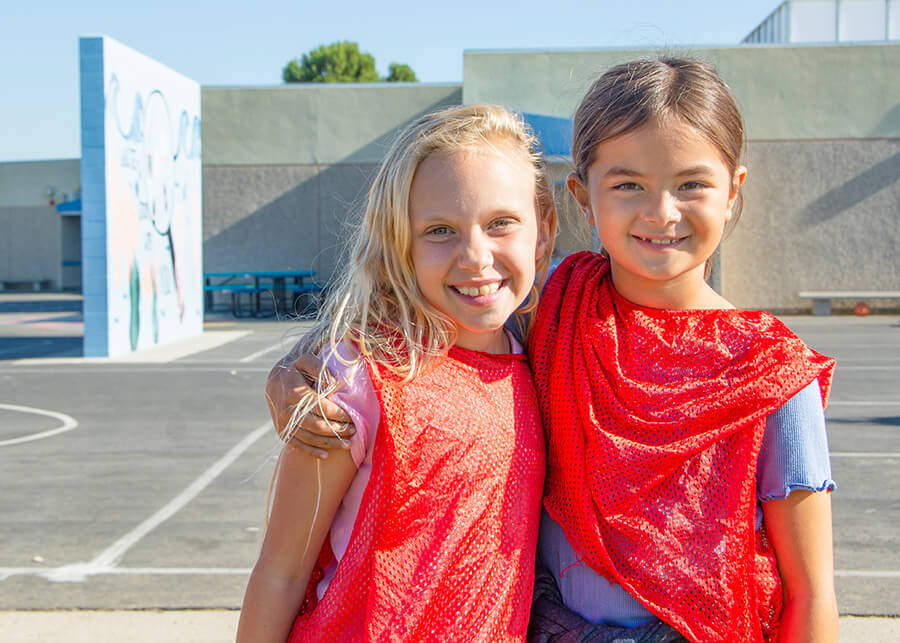
By Dr. Dawn Bridges, Vice President of Educational Affairs
It’s the end of another school year!
As summer stretches before us, it’s an ideal time to retreat and reflect. In my conversations with district leaders across the country this spring, they shared three big takeaways from the 2022-23 school year.
- First, districts have emerged from the pandemic and are back on the path to achieving great things with their students. While there are still challenges to overcome, district leaders are excited about the progress their schools are making. They’re generating great momentum for 2023-24!
- Second, families are seeking extra support to get back on track after the pandemic. District leaders know that family engagement in schools is essential to students’ learning, development, and well-being. As such, they are working to rebuild and strengthen relationships with families in a variety of ways, from improving school-to-home communications systems to offering enrichment programs that fill the childcare void before and after school.
- Third, student behavior at school continues to be a challenge. A May 2022 National Center for Education Statistics (NCES) survey found that:
- More than 8 in 10 public schools have seen stunted behavioral and socioemotional development in their students because of the COVID-19 pandemic.
- Minor offenses, such as tardiness and classroom disruptions, were the most frequently cited illicit behaviors that have increased in part due to the COVID-19 pandemic.
District leaders saw many of the same issues this school year. Students who began kindergarten or first grade during school closures continue to struggle with “how to do school.” Among older students, behavior issues range from refusing to talk in class or withdrawing from peers to emotional outbursts and physical fights.
These issues also underscore the need for family engagement. When parents and caregivers are involved as partners in their child’s education, they can support and reinforce positive, healthy behaviors in and out of school.
When parents and caregivers are involved as partners in their child’s education, they can support and reinforce positive, healthy behaviors in and out of school.
— Dr. Dawn Bridges
During our conversations, district leaders also shared insights into what they have been doing to help students and families, and what they plan to do this summer and in the coming year to build upon their momentum.
Focus on the whole child and foster a sense of belonging
Part of the vision of AASA, The School Superintendents Association, is that systemic school redesign “must happen within an intentional, relationships-based culture that is whole learner focused. The entire system must attend to the social, emotional, cognitive, mental health, and trauma-based needs of ALL learners.”
District leaders are taking this to heart. They understand that success in school is about more than academics and test scores. It’s also about broader dimensions that are critical to students’ success in school and in life. This includes their cognitive, physical, social, and emotional development.
Last year, many leaders began making social-emotional learning (SEL) a priority by intentionally building it into in-school and out-of-school-time programs. In addition to improving academic achievement, they say that SEL is having a positive impact on student behavior and attitudes toward school. It also contributes to more positive social interactions and relationships, which helps students feel a greater sense of belonging in school. When students feel accepted and supported, families feel more connected to the school community, too.
Increasing prosocial behaviors (e.g., kindness, empathy, helping, sharing, cooperating) among students also helps to reduce stress for teachers, which is another critical need in many districts.
Success in school is about more than academics and test scores. It’s also about broader dimensions that are critical to students’ success in school and in life. This includes their cognitive, physical, social, and emotional development.

Give students more opportunities to explore their interests
This summer, district leaders are particularly excited about their summer offerings for students. Programs like summer camps not only help working families, but they give students expanded opportunities to explore and build upon their interests. This further deepens their engagement and sense of belonging in school. Then when school starts up again, students are motivated and excited to learn — and before and after school enrichment programs can continue the fun.
Heartfelt congratulations on the completion of the school year and a happy summer to all!

Dr. Dawn Bridges
Dr. Dawn Bridges has over 25 years of experience in the fields of education and professional learning, having held the roles of teacher, reading specialist, special education coordinator, principal, and assistant superintendent for curriculum and instruction. She has dedicated her career to ensuring that all students have the support they need to thrive in and out of school. You can follow Dr. Bridges on LinkedIn and Twitter and subscribe to the RAS blog to keep up with her work.








